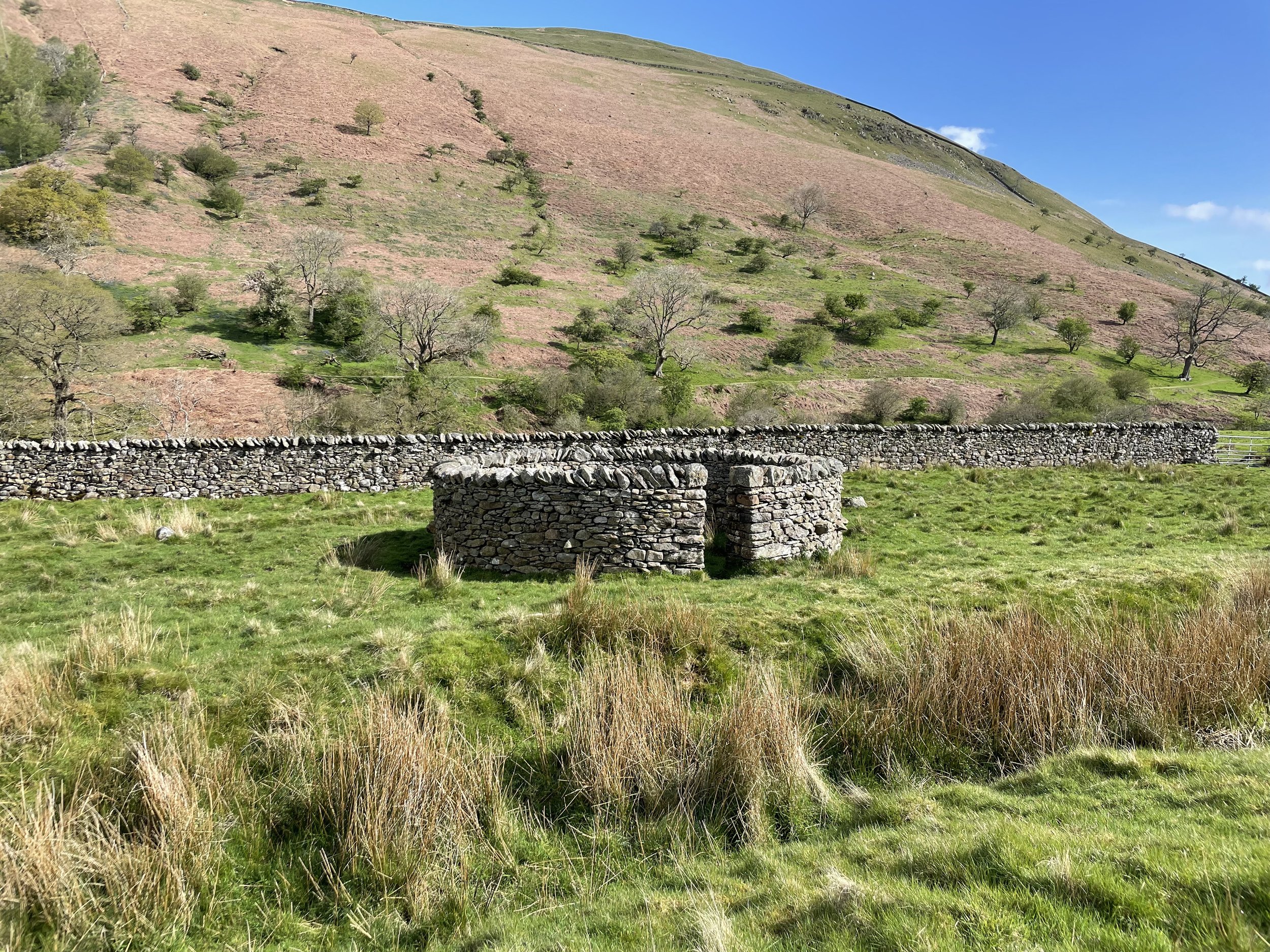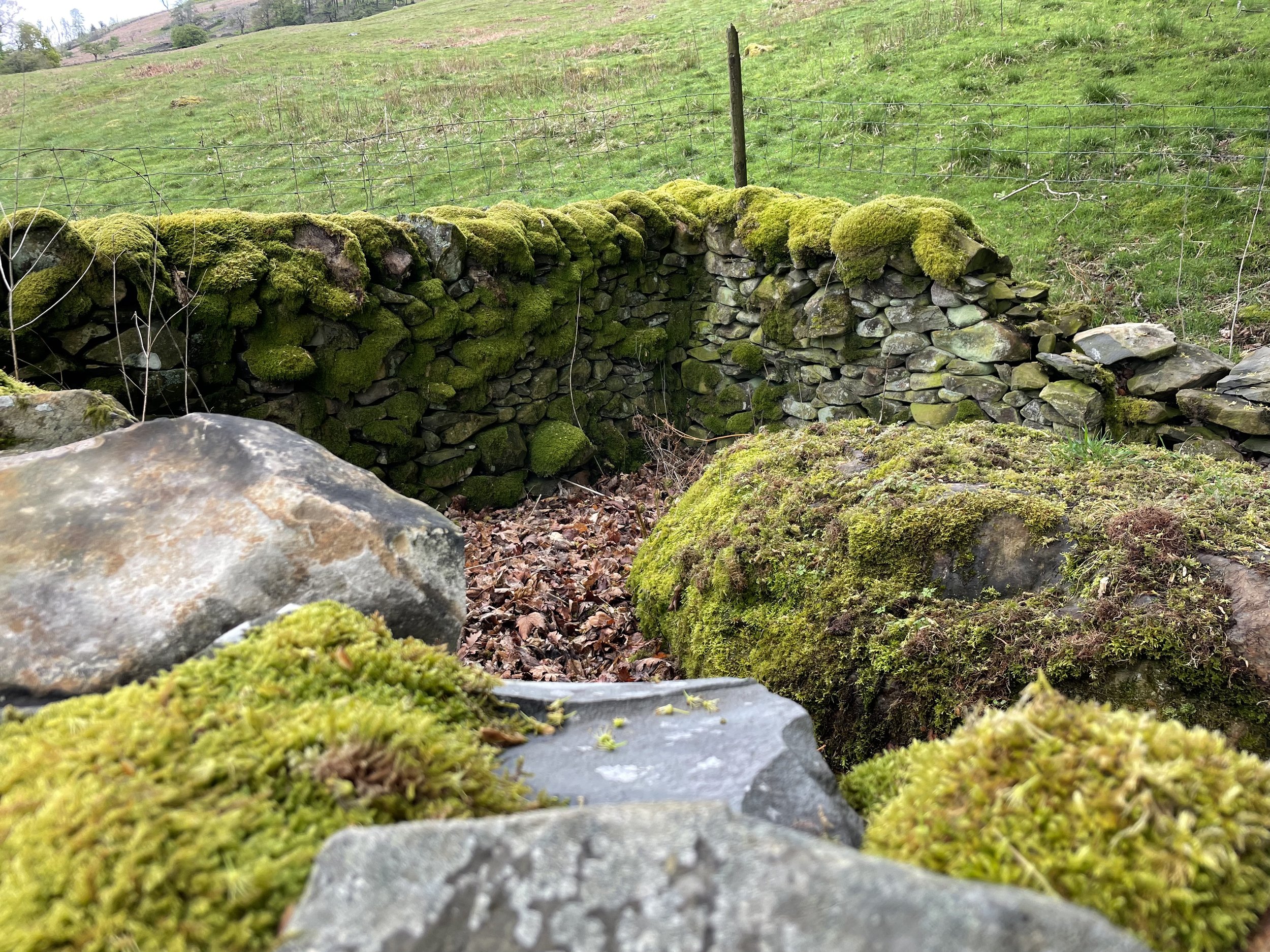Enfold
I’m home from a trip to England, which included tramping around the Cumbrian countryside where my husband grew up. A highlight for me was a quiet amble down a country road near the small village of Casterton. It is a most unassuming locale and yet the site of an art installation by the celebrated land artist Andy Goldsworthy. Starting in 1996, Goldsworthy began a project of restoring and creating artistic sheepfolds, based on the long history of English sheep farming. A fold is simply a pen, constructed of the same dry stone walls as the fenced lands where sheep roam. The pen can be used for lambing, shearing, or medicine.
About the Casterton folds, Goldsworthy has said, “I wanted to follow a journey like the sheep that followed the old drove road. We might pass by the first fold, but by the second or third might think, 'that's strange', and by the sixteenth all sorts of ideas are developing. The stones too have travelled on a journey from the quarry into the city and then into the buildings.”
If you Google “sheepfold” mostly what comes up are biblical references. But Goldsworthy was focused on the land and how landscape, art, and history intersect. More than rock or leaves, his subjects are time and ephemerality. Because the folds are now nearly 30 years old, several are in disrepair, crumbling back onto the land, being engulfed by plants and lichen. However, Goldsworthy placed huge boulders in each fold, so no matter how dilapidated the dry stone wall becomes, the site will always be marked.
“This was the first time I had made a work that really drew on the social nature of the landscape through the walls and farming traditions,” Goldsworthy has said. “I found that I was more and more drawn to the derelict old walls which I could rebuild, because that rooted the work into the place and it made a connection with the past and drew the past into it. It didn't just repeat the past or imitate it for nostalgic reasons, it actually made my work stronger because I was using that connection with the place.”
I’ve been a passionate Goldsworthy fan for years. Little did I know that my father-in-law, Rique, met Goldsworthy when he was working on the Casterton folds. This trip Rique told me that in 1996 he interviewed Goldsworthy for a local publication. Though the article did not ultimately come to fruition, Rique left an impression on Goldsworthy, who greeted him warmly when he saw him again several years into the project. Rique is a no-nonsense Northerner, and was frank with Goldsworthy about how he really didn’t understand how the sheepfolds counted as art. But Goldsworthy too is a plain-speaking Northerner and took Rique’s feedback in stride. Goldsworthy’s job is not to defend his art but simply to make it and let people interact with it how they will.
We also visited “Jack’s Fold” near Barbondale, which is more recognizable as an artwork. Stunning weather made for a dramatic image!
One of the things I love about the folds is how they illustrate my inquiry into “living well with art.” The sheepfolds live well in the landscape. They comment on the traditional farming life, without intruding upon it. They literally hold space – for contemplation, for grass, for air. They point to the intentionality of humans trying to live in concert with their natural surroundings. Using natural materials that can deteriorate over time, Goldsworthy takes the preciousness out of art; he lets it be at one with the world. The natural materials of the folds will outlast many human lives, and yet they are not static. They too will erode, settling back into the earth.




